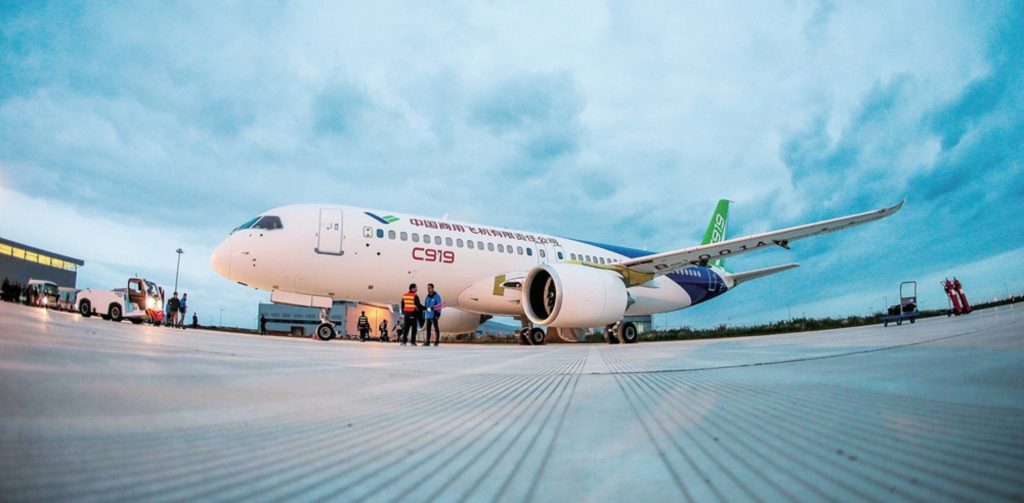




26 Mar 2025
Regulatory Crackdowns in Aviation: How Stricter Safety Measures Are Reshaping Maintenance Practices
In recent years, the aviation industry has faced increasing regulatory scrutiny as authorities worldwide tighten safety oversight in response to high-profile incidents and evolving operational risks. Aviation regulators, including the Federal Aviation Administration (FAA), European Union Aviation Safety Agency (EASA), and International Civil Aviation Organization (ICAO), have intensified their focus on compliance, introducing stricter safety mandates that impact aircraft maintenance, repair, and overhaul (MRO) operations.
With air travel demand rebounding post-pandemic, ensuring the safety and reliability of aircraft fleets has never been more critical. This blog explores recent regulatory crackdowns, the implications for airlines and MRO providers, and how the industry is adapting to heightened safety and compliance requirements.
1. Recent Safety-Related Incidents and the Push for Stricter Regulations
Aviation safety has always been paramount, but recent high-profile incidents have triggered increased regulatory action. Some key events include:
- Boeing 737 MAX Scrutiny – Despite returning to service, the Boeing 737 MAX continues to face regulatory oversight after manufacturing defects were reported, prompting safety inspections on thousands of aircraft.
- Door Plug Incident on Alaska Airlines Flight 1282 – The recent emergency involving a Boeing 737 MAX 9 led to urgent FAA inspections and the grounding of multiple aircraft for further assessments.
- GTF Engine Inspections – The Pratt & Whitney GTF engine recall, affecting Airbus A320neo aircraft, required extensive inspections, disrupting airline operations worldwide.
- Ongoing Maintenance Gaps – Several airlines have been flagged for deferred maintenance, leading to increased audits and compliance checks by aviation authorities.
As a result, regulators are implementing more stringent maintenance oversight, increased frequency of inspections, and expanded reporting requirements for operators and MROs.
2. Key Areas of Regulatory Crackdown in Aviation Maintenance
Regulators have introduced multiple measures to strengthen safety compliance, including:
a. Enhanced Maintenance Inspections and Reporting
Regulatory bodies are mandating more frequent inspections for critical aircraft components, particularly engines, fuselage integrity, and avionics systems. Airlines and MROs must now:
- Perform additional checks beyond standard maintenance schedules.
- Implement real-time monitoring solutions for predictive maintenance.
- Maintain stricter documentation and reporting of all maintenance activities.
b. Stricter Oversight on MRO Operations
The FAA and EASA have increased audits of third-party MRO providers, ensuring compliance with new safety directives. Key changes include:
- More rigorous qualification and certification processes for MRO personnel.
- Standardised training programs for aviation technicians and engineers.
- Stricter adherence to aircraft maintenance history tracking.
c. Increased Focus on Supply Chain Compliance
With ongoing concerns about counterfeit or substandard parts entering the market, regulators are enforcing the following:
- Stricter supplier vetting processes.
- Blockchain-based part traceability systems to track components throughout their lifecycle.
- Increased penalties for airlines and MROs found using non-certified parts.
3. How Airlines and MROs Are Adapting to Stricter Regulations
To navigate these regulatory shifts, airlines and MRO providers are adopting innovative strategies to ensure compliance while maintaining operational efficiency.
a. Integration of Advanced Digital Maintenance Solutions
Predictive maintenance powered by artificial intelligence (AI) and big data analytics is becoming a crucial tool for meeting regulatory demands. Airlines and MROs are investing in:
- Real-time aircraft health monitoring systems (AHMS) to detect potential issues before they escalate.
- Digital twin technology, which creates virtual replicas of aircraft components to simulate performance and predict wear and tear.
- Automated maintenance tracking software to ensure compliance with evolving safety mandates.
b. Strengthening In-House and Third-Party MRO Partnerships
With regulators emphasising maintenance accountability, airlines are:
- Expanding in-house MRO capabilities to gain greater control over maintenance procedures.
- Partnering with certified third-party providers with proven regulatory compliance track records.
- Enhancing technician training programs to align with new regulatory requirements.
c. Improving Supply Chain Resilience and Compliance
To address regulatory scrutiny on spare parts and components, MROs and airlines are:
- Implementing end-to-end part authentication and digital tracking systems.
- Diversifying suppliers to reduce dependency on single-source manufacturers.
- Increasing collaboration with OEMs to ensure the use of certified and high-quality parts.
4. The Role of Acumen Aviation in Supporting Compliance and Safety
As a leading provider of asset management and technical advisory services, Acumen Aviation plays a critical role in helping airlines, lessors, and MROs navigate evolving regulatory challenges. Our expertise includes:
- Aircraft Technical Inspections & Audits – Ensuring compliance with global regulatory requirements through detailed aircraft inspections and maintenance audits.
- Fleet Transition & Asset Management – Supporting aircraft transitions, including maintenance records verification and airworthiness compliance assessments.
- Predictive Maintenance & Digital Solutions – Leveraging cutting-edge technology to optimise maintenance scheduling and regulatory reporting.
- MRO & Supplier Due Diligence – Assisting airlines and lessors in selecting maintenance providers that meet the latest safety and compliance standards.
With regulators continuously tightening oversight, Acumen Aviation’s technical and asset management expertise ensures that stakeholders remain ahead of compliance challenges while optimising operational efficiency.
Conclusion
The increasing regulatory crackdowns in aviation are reshaping maintenance practices, pushing airlines and MROs toward more rigorous compliance, advanced technology adoption, and supply chain resilience. As authorities enforce stricter oversight, industry players must remain agile, adopting proactive strategies to meet evolving safety standards.
With its extensive experience in aviation asset management and technical services, Acumen Aviation provides the insights and solutions needed to navigate regulatory complexities while maintaining safety, efficiency, and profitability.
To learn more about how Acumen Aviation can support your compliance and maintenance strategy, contact our team today.





